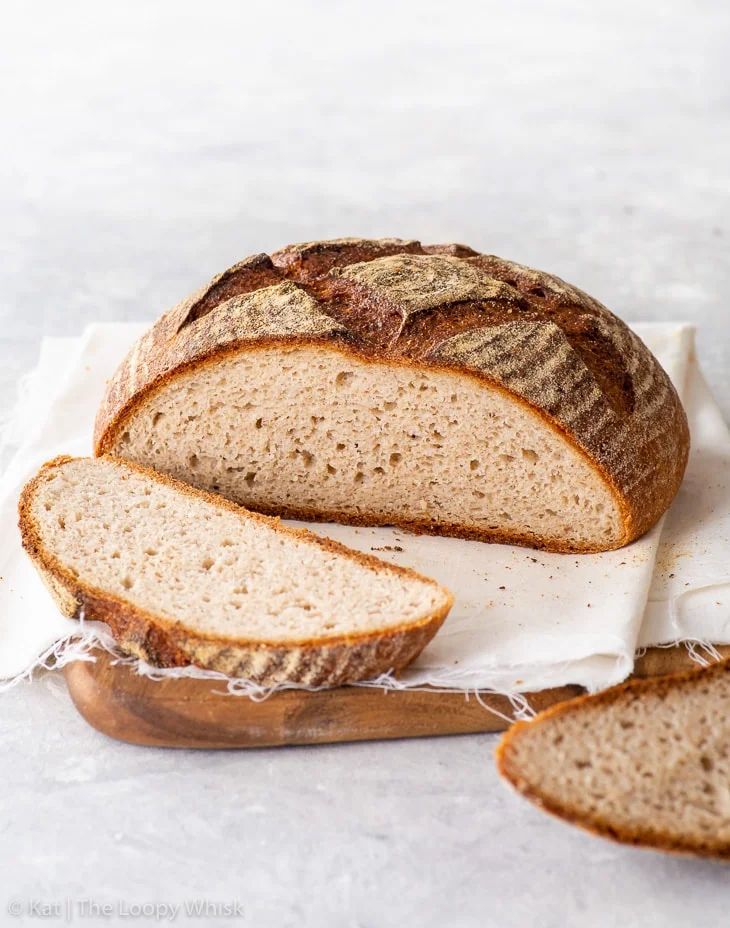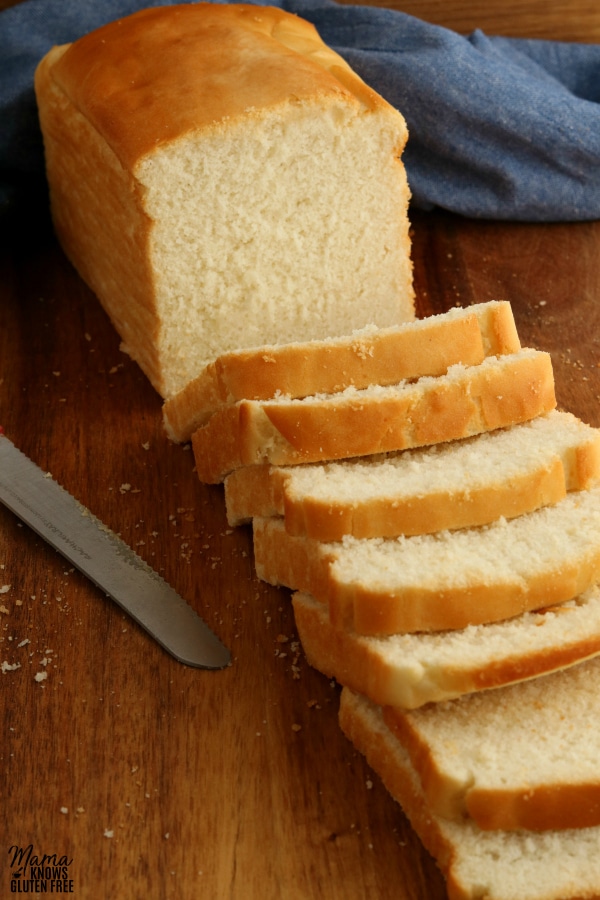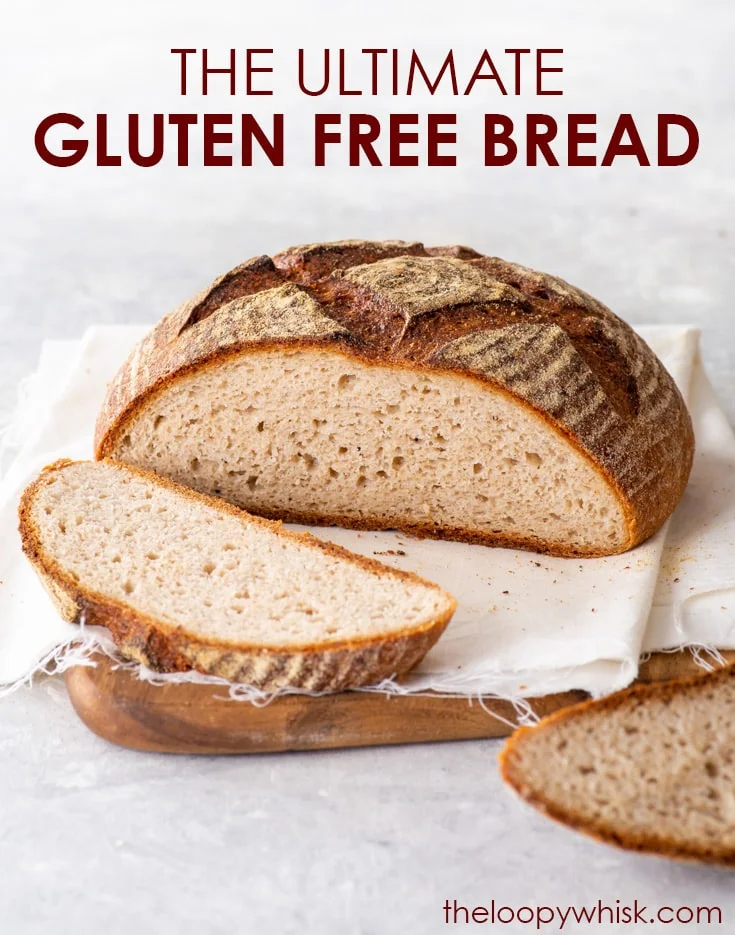Bake Your Own Gluten-Free Bread at Home
Bake Your Own Gluten-Free Bread at Home
In today’s world, more individuals are exploring the myriad of options available to meet their dietary needs, leading to a surge in the popularity of gluten free bread. If you’re intrigued by the thought of creating your own delicious loaves, look no further than our guide on how to Bake Your Own Gluten-Free Bread at Home. By understanding the unique ingredients that set gluten free bread recipes apart, you can master the art of gluten-free baking. Not only will you enjoy the satisfaction of homemade bread, but you’ll also discover the numerous benefits of gluten free bread, making it a healthier choice for many. For those who prefer convenience, we’ll also provide tips on where to buy gluten free bread. Join us as we dive into the essentials of gluten-free baking, ensuring you have all the knowledge you need to succeed in your culinary journey.
Understanding Gluten-Free Bread: What Makes It Different?
Gluten-free bread stands apart from traditional bread due to the absence of gluten, a protein found in wheat, barley, and rye. This distinction is crucial for those with celiac disease, gluten intolerance, or those opting for a gluten-free lifestyle. Understanding the differences can help you make informed dietary choices.
Key Differences Between Gluten-Free and Traditional Bread
| Aspect | Gluten-Free Bread | Traditional Bread |
|---|---|---|
| Contents | Made with gluten-free flours (e.g., almond, rice, or coconut) | Made with wheat flour |
| Texture | Often denser, more crumbly | Typically lighter and fluffier |
| Flavor | Unique flavors based on ingredients | Familiar, universal taste |
| Nutritional Value | May have varied nutritional profiles | Usually higher in carbohydrates |
| Availability | Specialty stores, DIY options | Widely accessible in stores |
The benefits of gluten-free bread extend beyond dietary restrictions. For example, individuals with gluten sensitivity may experience reduced digestive issues and improved energy levels when they switch to gluten-free options. Furthermore, bake your own gluten-free bread at home allows for customization, enabling the use of wholesome ingredients that suit personal taste and dietary needs.
While some may initially prefer to buy gluten-free bread, investing time in baking can lead to exciting culinary experiences. There are many gluten free bread recipes available that cater to different palates, making the journey of gluten-free baking both enjoyable and rewarding. Exploring these differences helps deepen your appreciation for gluten-free bread and inspires healthier lifestyle choices.

Essential Ingredients for Gluten-Free Bread
Creating delicious gluten-free bread recipes at home requires understanding the specific ingredients that replace traditional gluten-filled options. Unlike regular bread, gluten-free bread relies on alternative flours and binders to provide texture and flavor. Here’s a breakdown of essential ingredients to include in your baking.
| Ingredient | Purpose | Examples |
|---|---|---|
| Gluten-Free Flours | Base of the bread | Almond flour, coconut flour, brown rice flour, and oat flour. |
| Binders | Helps with texture and moisture | Xanthan gum, chia seeds, or psyllium husk. |
| Leavening Agents | Provides lift and airiness | Baking powder or baking soda. |
| Liquid | Activates dry ingredients and adds moisture | Water, dairy, or non-dairy milk. |
| Sweeteners | Enhances taste and aids fermentation | Honey, maple syrup, or coconut sugar. |
These ingredients are vital to successfully bake your own gluten-free bread at home. It is essential to experiment with different combinations and measurements, as each flour exhibits unique properties. For optimal results, consider the following:
- Blend Flours: Combine various gluten-free flours for a balanced texture.
- Adjust Liquid: Monitor consistency, as gluten-free batters often require more moisture.
- Don’t Skip Binders: They mimic the elasticity gluten provides in traditional breads.
While you can always buy gluten-free bread, creating it at home allows for customization in flavor and nutrition, ensuring you’re enjoying the benefits of gluten-free bread tailored to your taste preferences. With the right ingredients and a bit of practice, you’ll be on your way to delicious, homemade gluten-free bread!
Step-by-Step Guide to Bake Your Own Gluten-Free Bread at Home
Baking gluten-free bread may seem daunting at first, but with the right guidance, you can easily create delicious loaves in your kitchen. Follow this step-by-step guide to uncover the joy of gluten-free baking:
Gather Your Ingredients
To start, ensure you have these essential ingredients:
- Gluten-free flour blend
- Xanthan gum (important for texture)
- Yeast (active dry or instant)
- Liquid (warm water or milk)
- Sweetener (sugar or honey)
- Salt
- Oil or butter (for moisture)
Prepare the Dough
Mix Dry Ingredients: In a large mixing bowl, combine your gluten-free flour, xanthan gum, yeast, sugar, and salt. Mix well.
Add Liquid Ingredients: Gradually pour in warm water or milk, mixing continuously to prevent clumps. Then, incorporate your oil or butter into the mixture.
Beat the Dough: Use a hand mixer or stand mixer with a paddle attachment. Beat the dough on medium speed for about 3-5 minutes until it becomes smooth and elastic.
Shape and Rise
Shape the Loaf: Transfer the dough to a greased loaf pan. Use a spatula to create a smooth top.
First Rise: Cover with a clean towel and let the dough rise in a warm place for 30-45 minutes, or until it doubles in size.
Bake the Bread
Preheat Your Oven: Set your oven to 375°F (190°C).
Bake: Place the loaf in the preheated oven and bake for 30-40 minutes. The bread is ready when it has a golden-brown crust and sounds hollow when tapped on the bottom.
Cool and Slice: Allow the bread to cool in the pan for 10 minutes, then transfer it to a wire rack to cool completely before slicing.
Now that you know how to Bake Your Own Gluten-Free Bread at Home, enjoy experimenting with different gluten free bread recipes! Whether you choose to customize flavors or toppings, homemade bread is always a rewarding experience. For those who prefer convenience, you can always buy gluten free bread at your local store or online!
Popular Gluten-Free Bread Recipes to Try
Exploring gluten free bread recipes can be an enjoyable adventure in the kitchen, making it easy to create delicious alternatives for your baking needs. Here are some standout recipes that can satisfy your cravings for wholesome, homemade bread.
1. Almond Flour Bread
- Ingredients: Almond flour, eggs, baking powder, olive oil, salt
- Benefits: Low in carbs and rich in healthy fats, this bread is a great option for those following a ketogenic or paleo diet.
2. Coconut Flour Sandwich Bread
- Ingredients: Coconut flour, eggs, milk (dairy or non-dairy), honey, baking soda
- Benefits: High in fiber and naturally sweet, this recipe offers a delicious option for breakfast or lunch sandwiches.
3. Oat and Flaxseed Bread
- Ingredients: Gluten-free oats, flaxseed meal, water, olive oil, salt
- Benefits: Packed with nutrients from oats and flax, this bread supports heart health and digestion.
4. Quinoa Bread
- Ingredients: Quinoa flour, eggs, yogurt, baking powder, salt
- Benefits: Rich in protein and essential amino acids, this bread is an excellent choice for those looking to boost their nutritional intake.
Key Points:
| Recipe Name | Main Ingredients | Benefits |
|---|---|---|
| Almond Flour Bread | Almond flour, eggs, baking powder | Low in carbs, high in healthy fats |
| Coconut Flour Sandwich Bread | Coconut flour, eggs, honey | High in fiber, naturally sweet |
| Oat and Flaxseed Bread | Gluten-free oats, flaxseed meal | Nutrient-packed, heart-healthy |
| Quinoa Bread | Quinoa flour, eggs, yogurt | High in protein, nutritious |
By trying these gluten free bread recipes, you can relish the satisfaction of bake your own gluten-free bread at home and enjoy the numerous benefits of gluten-free bread. Opt for these recipes and elevate your culinary skills today! If the kitchen isn’t your domain, consider knowing where to buy gluten free bread, but don’t hesitate to dive into this exciting baking journey.

Tips for Perfecting Your Gluten-Free Baking
Baking gluten-free bread can be a rewarding endeavor, but it also comes with its unique challenges. Here are some essential tips to help you craft delicious gluten free bread recipes right in your kitchen:
Use a Blend of Flours: Different flours bring unique flavors and textures. A combination of brown rice flour, almond flour, and tapioca flour can yield fantastic results.
Incorporate Xanthan Gum: This ingredient acts as a binding agent, mimicking the elasticity provided by gluten. Aim for about 1 teaspoon per cup of flour used.
Pay Attention to Hydration: Gluten-free dough often requires more liquid than traditional dough. Adjust your liquids carefully to achieve a wet, yet manageable consistency.
Experiment with Yeast: Fresh yeast or active dry yeast can significantly enhance your bread’s rise. Make sure to proof your yeast properly to ensure optimal fermentation.
Let It Rest: Allow your dough to rest for 30 minutes to an hour before baking. This rest period helps the flours absorb moisture and improve the texture.
Preheat Your Oven: Always preheat your oven thoroughly. A hot oven is crucial for creating the perfect crust, which adds flavor and texture to your loaf.
Quick Reference Table
| Tip | Description |
|---|---|
| Flour Blend | Combine multiple flours for better taste and texture. |
| Xanthan Gum | Use to enhance dough elasticity. |
| Liquid Adjustment | Gluten-free dough requires more liquid. |
| Yeast Type | Choose fresh or active dry yeast for best results. |
| Rest Period | Let dough rest to improve the texture. |
| Preheat Oven | Essential for achieving a proper crust. |
By applying these tips, you can enhance your baking skills and enjoy the numerous benefits of gluten free bread in your meals. If baking feels too daunting, there’s always the option to buy gluten free bread, but the satisfaction of mastering your own recipes is truly unmatched.
Benefits of Gluten-Free Bread: Why Choose It?
“Baking isn’t just about following a recipe; it’s about creating a nourishing experience.”
When it comes to gluten-free bread, many may wonder why they should consider adding it to their diet. Here are several compelling reasons to choose gluten-free bread over traditional options:
Digestive Health: For individuals with celiac disease or gluten intolerance, consuming gluten can lead to serious digestive issues. Embracing gluten-free bread can alleviate these symptoms effectively.
Variety of Ingredients: Gluten-free bread recipes often include a range of nutritious ingredients such as almond flour, coconut flour, and chia seeds. This not only enhances flavor but also boosts the nutritional profile, offering more fiber, vitamins, and minerals.
Weight Management: Many people find that switching to gluten-free bread can promote a balanced diet. By focusing on whole foods and gluten-free options, you may inadvertently cut out processed foods high in refined carbohydrates, supporting weight maintenance.
Increased Energy Levels: For those sensitive to gluten, ingesting it can lead to feelings of lethargy. Opting for gluten-free bread may contribute to sustained energy levels throughout the day.
Nutritional Comparison
| Nutrient | Traditional Bread | Gluten-Free Bread* |
|---|---|---|
| Calories | 80-120 | 70-100 |
| Fiber (g) | 2-3 | 3-5 |
| Protein (g) | 3-5 | 4-6 |
| Sugars (g) | 1-2 | 1-3 |
(*Values may vary based on specific gluten-free bread recipes.)
In summary, choosing to Bake Your Own Gluten-Free Bread at Home not only caters to dietary restrictions but also provides an opportunity to experiment with diverse ingredients, ultimately leading to a healthier lifestyle. If baking isn’t your preference, consider heading to your local store to buy gluten-free bread and experience these benefits firsthand!
Where to Buy Gluten-Free Bread If You Prefer Not to Bake
For those who prefer a hassle-free option or simply don’t have the time to Bake Your Own Gluten-Free Bread at Home, finding quality alternatives is essential. Fortunately, there are many options available to satisfy your gluten-free needs without the baking mess. Below are some convenient places to buy gluten free bread:
Where to Purchase:
| Store Type | Description |
|---|---|
| Local Grocery Stores | Many chain supermarkets now carry a variety of gluten-free bread options in their health food aisles. |
| Health Food Stores | Specialized health food stores often offer a wider range of gluten-free products, including artisan brands. |
| Farmers Markets | Look for local bakers at farmers markets who offer fresh gluten-free bread recipes, often prepared with high-quality ingredients. |
| Online Retailers | Websites like Amazon or specialty gluten-free retailers provide convenience and a plethora of options delivered straight to your door. |
Key Considerations:
- Check Ingredients: Always read labels to ensure the product meets your dietary needs.
- Storage Requirements: Note if the bread needs to be kept frozen or stored in a refrigerator for extended freshness.
- Price Comparison: Prices vary widely; compare options to find the best deal for quality.
Benefits of Buying:
- Time-Saving: No preparation time means you can enjoy your bread almost instantly.
- Variety: Explore different textures and flavors that might be challenging to achieve at home.
- Accessibility: Perfect for those who may not be confident in their baking skills or lack necessary ingredients.
By sourcing your gluten-free bread from trusted locations, you can embrace the benefits of gluten-free bread while saving time in your busy schedule!

Frequently Asked Questions
What are the essential ingredients needed to bake gluten-free bread at home?
To bake gluten-free bread at home, you’ll need several essential ingredients. These typically include gluten-free flour blends, which can be a mixture of rice flour, almond flour, and tapioca flour. You’ll also require xanthan gum or psyllium husk as a binding agent to help mimic the elasticity of gluten. Additionally, yeast (or a suitable gluten-free substitute) is needed for leavening, along with warm water, salt, and possibly sweeteners like honey or sugar to enhance flavor. It’s advisable to check specific recipes for any unique ingredients that may be required.
Can I use regular bread recipes for gluten-free bread baking?
While you may be tempted to adapt traditional bread recipes for gluten-free baking, it’s important to understand that gluten-free dough behaves differently due to the absence of gluten. Regular bread relies on the protein gluten for structure and texture, which gluten-free alternatives do not provide. Instead, seek out recipes specifically designed for gluten-free bread, as these will typically suggest the right flour blends, ingredients, and ratios needed for the desired outcome. This ensures a more successful and satisfying loaf.
How long does gluten-free bread last, and how should I store it?
Gluten-free bread generally has a shorter shelf life than traditional bread due to the absence of preservatives. Typically, homemade gluten-free bread can remain fresh at room temperature for about 2-3 days if stored in an airtight container. For longer preservation, it’s best to freeze the bread, which can keep it usable for several months. When ready to enjoy, simply thaw the slices and reheat them in the oven or toaster for optimal texture. Be sure to slice the bread before freezing to make it easier to grab individual portions.
What can I do if my gluten-free bread doesn’t rise properly?
If your gluten-free bread fails to rise, several factors could be at play. First, check that your yeast is fresh and proofed correctly; if not, it may not activate properly. Additionally, ensure that your dough or batter has adequate hydration, as gluten-free flours can sometimes require more liquid. The mixing process is also crucial, as adequate air incorporation helps with leavening. Finally, make sure you’re baking in a warm environment, as yeast thrives in heat. If you follow these tips and still encounter issues, consider experimenting with different gluten-free flour blends or an additional leavening agent.



